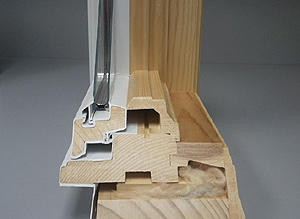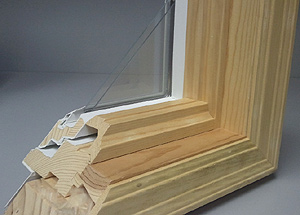To help make a better replacement window choice it helps to understand how windows are put together and what advances have been made in home windows.
First, the basics. There are several parts to a window:
- The sash is the part with the glass and the material around the glass holding it in place, or the “frame” of the window. The sash is what opens and closes in a window.
- The sash is held in place by side jambs and the “head” jamb at the top. The bottom of the area around the window is the “sill.”
- There is “trim” around the window on the inside and outside of the home.
Prior to the 1950s all parts of the window were typically made of wood. If a window pane cracked, broke or needed replacing a new sash could be built if the glass pane couldn’t be removed and replaced.
 Then, in the mid 1960s, aluminum windows were brought to market and, a decade later, vinyl windows were introduced as a low-cost replacement window. While vinyl was introduced in all parts of the window — sashes, jambs, sills and trims — the main revolutionary aspect was in the sashes.
Then, in the mid 1960s, aluminum windows were brought to market and, a decade later, vinyl windows were introduced as a low-cost replacement window. While vinyl was introduced in all parts of the window — sashes, jambs, sills and trims — the main revolutionary aspect was in the sashes.
That’s because vinyl sashes offered a low-cost replacement window alternative to wood or metal. This allowed homeowners to simply replace wood sashes with vinyl while keeping the wood or metal window jambs and frames intact.
While vinyl replacement windows remained the most popular for several decades, builders of new homes continued introducing new types of windows, mainly by combining materials.
 The internal trim of a window may have been wood to add warmth and customization, the sash made of vinyl and the external frame made of aluminum or steel. Window manufacturers have also experimented with so-called ‘high end’ vinyl replacement windows, which are stronger than standard vinyl windows.
The internal trim of a window may have been wood to add warmth and customization, the sash made of vinyl and the external frame made of aluminum or steel. Window manufacturers have also experimented with so-called ‘high end’ vinyl replacement windows, which are stronger than standard vinyl windows.
In the last decade, window manufacturers have begun marketing a fiberglass window and composite windows (made with a combination of vinyl and wood pulp.)
These new material are touted as offering the strength of steel along with the energy efficiency and low maintenance of vinyl.
Upcoming posts will take a look at the new types of replacement windows and how they compare to wood, vinyl and metal windows.